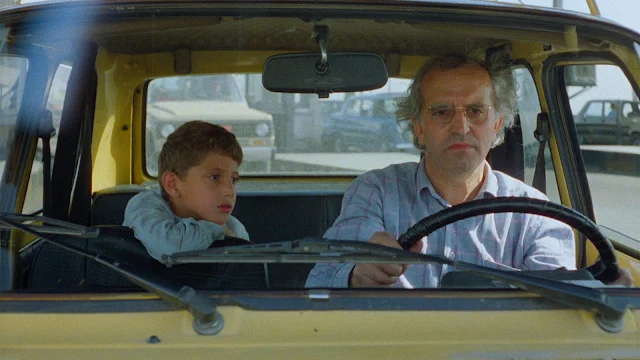A blog formerly known as Bookishness / By Charles Matthews
"Dazzled by so many and such marvelous inventions, the people of Macondo ... became indignant over the living images that the prosperous merchant Bruno Crespi projected in the theater with the lion-head ticket windows, for a character who had died and was buried in one film and for whose misfortune tears had been shed would reappear alive and transformed into an Arab in the next one. The audience, who had paid two cents apiece to share the difficulties of the actors, would not tolerate that outlandish fraud and they broke up the seats. The mayor, at the urging of Bruno Crespi, explained in a proclamation that the cinema was a machine of illusions that did not merit the emotional outbursts of the audience. With that discouraging explanation many ... decided not to return to the movies, considering that they already had too many troubles of their own to weep over the acted-out misfortunes of imaginary beings."--Gabriel García Márquez, One Hundred Years of Solitude
Search This Blog
Tuesday, November 5, 2019
And Life Goes On (Abbas Kiarostami, 1992)
And Life Goes On (Abbas Kiarostami, 1992)
Cast: Farhad Kheradmand, Buba Bayour, Hocine Rifahi, Ferhendeh Feydi, Mahrem Feydi, Bahrovz Aydini, Ziya Babai, Mohamed Hocinerouhi, Hocine Khadem, Maassouma Berouana, Mohammad Reza Parvaneh. Screenplay: Abbas Kiarostami. Cinematography: Homayun Payvar. Film editing: Abbas Kiarostami, Changiz Sayad.
Nothing quite sums up And Life Goes On better than its final sequence. We have followed a film director and his young son on their journey into the earthquake-shattered north of Iran, where the director hopes to find out the fate of the boys who appeared in his earlier film, Where Is My Friend's House? After battling traffic clogged with heavy-equipment clearing the rubble, and being turned on roads closed by fissures that have opened into the earth or blocked by landslides, he finally finds the road that will take him to the village of Koker, where the film was made. Having been told that his aging automobile will have trouble making it up the steep hills ahead of him, the director passes up a man carrying a heavy burden who asks for a lift. And so we watch from the distant high vantage point of another hill as the car toils up the hill, fails to make it to the top, backs down and tries again, fails again and rolls back down to the bottom. He turns the car back into the direction he came from and drives off screen, just as the man carrying the burden enters the frame and begins his long walk up the hill. He makes it and turns the next corner in the zigzag road. Then the director's car reappears, and building up momentum, makes it to the top, where he picks up the man and continues their journey. It's one long beautiful take, and it encompasses the theme of endurance that is central to And Life Goes On. It's a fictionalized version of Kiarostami's own experience, with actors Farhad Kheradmand and Buba Bayour playing equivalents to Kiarostami and his son. As in many of Kiarostami's films, including Where Is My Friend's House?*, most of the actors are non-professionals, genuine and rough-edged. The suffering of the survivors, almost all of whom have lost one or more family members, is subordinated to their stubborn determination to stay alive, perhaps best demonstrated by a pair of newlyweds whose wedding was interrupted by the earthquake, killing most of the guests, but who went on with the marriage ceremony anyway.
*The Persian title has been translated several different ways: IMDb, for example, calls it Where Is the Friend's Home?
















